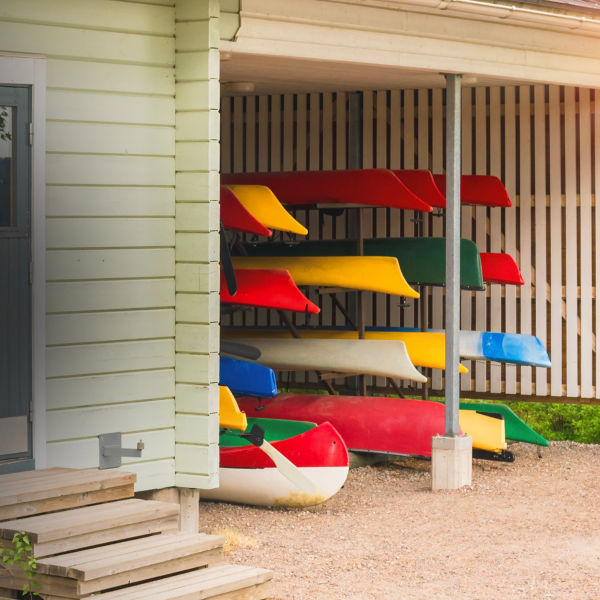
If you are interested in any type of paddlesport, whether it’s kayaking, canoeing, or standup paddleboarding, one essential gear item remains the same: a personal floatation device, or PFD. And that absolute need goes for any body of water, whether you’re floating on a calm lake or running raging whitewater; a functional, well-fitting PFD should be the first piece of gear you buy. Too many variables can turn an errant capsize and swim into a fatality without one. It’s also a legal requirement to have a wearable, U.S. Coast Guard-approved PFD for every paddler on your craft, plus federal law for children under 13 to be wearing one at all times. The good news is that there are many effective, comfortable and unobtrusive options that fit your specific paddling style, needs and budget.
In this guide, you'll learn about:
- Types of PFDs
- PFD Designs
- Features To Consider
- Fit and Sizing
- How To Choose the Right PFD
Types of PFDs
Though the Coast Guard also approves “lifejackets” (a term that describes all PFDs) for commercial use, we’ll focus on the recreational, wearable kind. That most often translates to a lifejacket classified as Type III or V, which provides buoyancy aid to paddlers but still requires movement to keep your face out of the water—and not one that’s too buoyant, designed purely to float a person face-up like you might see stowed on a ship.
Type I: The highest-grade buoyancy PFD that will aid in turning a swimmer from a face-down position to a more vertical position on their back. This type will have the greatest chance of survival and is designed for off-shore boating.
Type II: The second level of buoyancy PFD intended to turn a face-down swimmer to an upright position. These are typically the horse-collar style and best for near-shore activities.
Type III: Buoyancy support for a conscious swimmer designed for sports like kayaking, canoeing, and SUP. This type, most popular for paddlesports, is not required to turn a face-down swimmer to an upright position and offers the best protection without restricting movement.
Type IV: Floatation aid designed to be thrown to a person overboard; not meant to be worn.
Type V: Type V is designed to provide buoyancy support for specific recreational activities, but often requires specialized knowledge (like inflation, or added safety features on rescue PFDs), so not as suitable for many types of paddling or commercial use.
PFD Designs and Features
Type III and Type V PFDs are designed in two main styles:
- Standard PFDs: Foam-filled PFDs are the standard and provide buoyancy at all times. These are the more popular and a better option for assured safety.
Pros: Will support an unconscious swimmer; foam provides extra insulation in cold and windy conditions; versatile choice good for any type of active paddling, and both non-swimmers and expert paddlers alike.
Cons: Bulkier design can restrict torso movement; foam is hotter in warm conditions.
- Inflatable PFDs: These PFDs have a rip cord that manually activates a CO2 cartridge for rapid inflation of a collar-like air chamber. They’re usually available in two styles: one worn suspender-like around the collar, and the other nested in a belt pack (which adds the need to put the inflated collar over your head once activated).
Pros: Compact and minimal design that provides floatation when needed; less bulk allows for maximum movement; cooler in hot conditions.
Cons: Requires an alert, conscious swimmer to inflate; not a good option for novice paddlers and non-swimmers; only available for adults; requires cartridge to be filled or replaced after each activation, plus air chamber to be repacked/rearmed, so not ideal for active paddlers who could be in the water multiple times during a paddling outing.





















